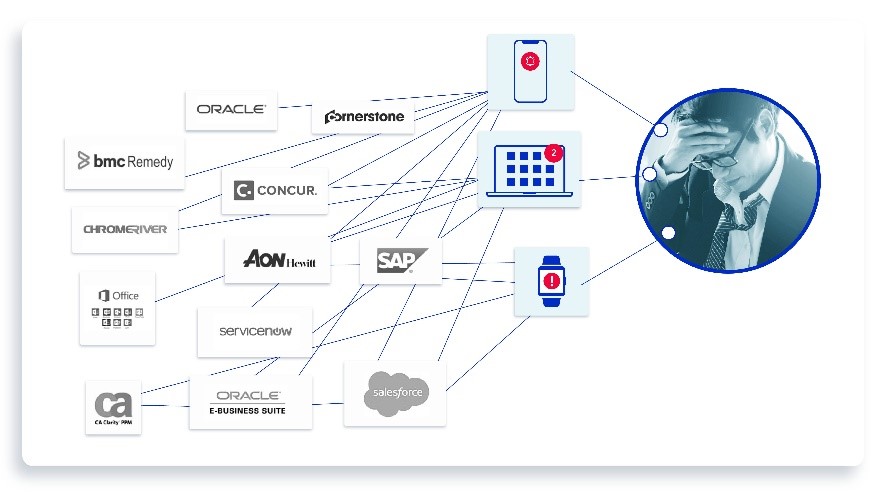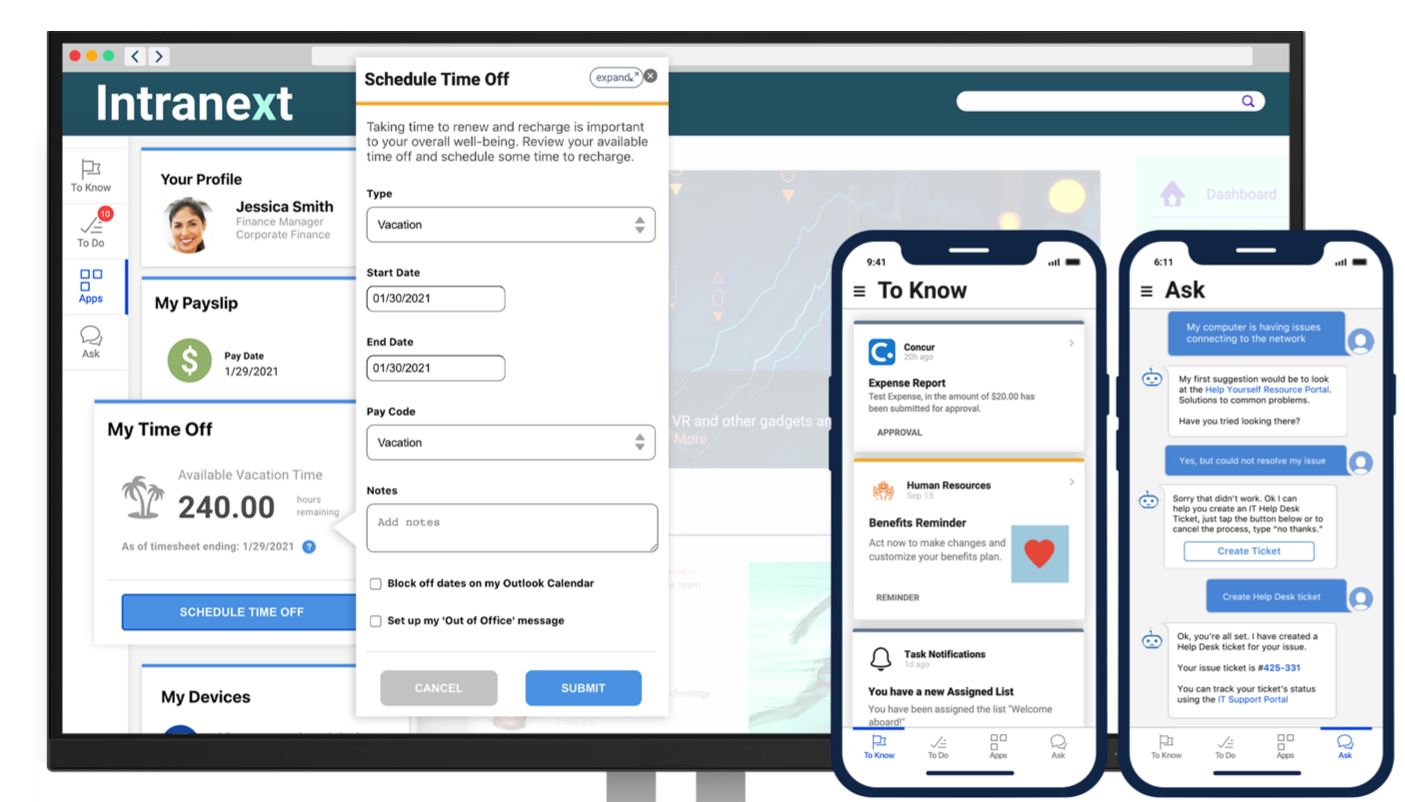Working smarter in the digital workplace
There are many ways organizations can improve their digital workplace. Gartner® covers three of the biggest approaches in their report, “Take These 3 Actions to Make Digital Workplaces Happier, Faster and Smart.”
We covered two of their recommendations in recent blogs, both from a high-level perspective, as well as how Workgrid can help address each issue.
Now it’s time to tackle the third approach Gartner suggests for modernizing the digital workplace, “aspire to work smarter.”

“19.8 percent of business time -- the equivalent of one day per working week -- is wasted by employees searching for information to do their job effectively,” Source: A Fifth of Business Time is Wasted
The idea of “working smarter, not harder” is a common-sense mantra we’re all familiar with. In the context of the digital workplace, however, it’s a concept that got turned on its head with the advent of the pandemic.
To address the prime directive of enabling widespread remote work, organizations unleashed a flurry of new apps and collaboration platforms to keep employees productive and businesses afloat. Their efforts were a success, and now, nearly two years in, many factors indicate that remote work may even be better for employee satisfaction and productivity.
But there have been some negative side effects to these digital transformation efforts.
While each individual solution companies launched were well-suited to help workers be more engaged and productive (collaboration and communication platforms, mobile apps for enterprise systems, etc.), their cumulative effect was a frustrating, disjointed experience that dragged down productivity. There are too many places to go to find information and complete tasks, communications are coming from more sources than ever before, and workers are wasting precious time on cumbersome manual processes that delivered no business value.

While remote work has been largely successful, employees need help guiding their attention and reducing digital friction to ensure long-term success.
Now that we can all shift out of reaction mode, it’s time to think about how we can improve the digital employee experience. It’s imperative. Hybrid work will be a reality for most companies and its long-term success depends on the very thing Gartner is suggesting – helping employees work smarter, not harder.
Improving attention management & reducing digital friction
So if adding more purpose-built solutions to your tech stack isn’t the solution to helping employees work smarter, what is?
The good news is that the answer is a fairly simple one.
Employees are struggling with two main issues:
Attention management
Digital friction
The solution to helping them overcome these roadblocks lies in taking advantage of your existing systems to create the simplified, streamlined digital experiences they need, no matter where – or how – they choose to work.
The first step is to create a centralized location for the important tasks and information employees need from across the enterprise. By putting important communications alongside routine, high-volume tasks, employees always know what needs their immediate attention. This enables them to work with optimum efficiency and gives them more time to spend on the meaningful work that drives both personal fulfillment and business value. This approach is especially powerful when existing systems are integrated with the platforms employees spend the most time in, such as Teams, a mobile app, or even the intranet.

Centralizing important tasks and information from across the enterprise helps guide employees’ attention to what’s most important.
Reducing digital friction can be accomplished with a similarly straightforward approach
Once tasks and information are centralized into a single experience that’s available in the flow of work, the next focus should be to enable employees to take immediate action on simple, routine tasks, rather than logging into individual source systems. This can be accomplished through the effective use of integrations. By making it quick and easy to complete high volume tasks like processing approvals and submitting service desk tickets, you can eliminate one of the biggest sources of frustration employees face.
Driving innovation with the democratization of technology
With the groundwork laid for a seamless digital experience, it’s time to think about what else your business needs to remain competitive. The ability to innovate will be a key factor of success, but is your organization positioned to innovate quickly or effectively? The answer is probably no. The volume of digital initiatives doubled during the pandemic and with skilled developers in short supply, it’s more difficult than ever for over-tasked and under-staffed teams to keep up.
It’s estimated that 75% of large enterprises will use at least four low/no-code development tools by 2024, making it one of the fastest growing technical initiatives. Forward-thinking organizations will put this advancement to use now in order to leverage existing technology investments to their greatest potential. By enabling citizen developers to quickly create custom experiences for existing systems - without the help I IT – you can provide the right information to the right employees at the right time, all within the flow of employees’ work. This approach supports the initiatives discussed above, guiding workers’ attention and reducing digital friction, while also delivering the custom experiences businesses need to run at peak efficiency.

Business of all shapes and sizes have been on a mind-boggling rollercoaster for nearly two years now, and there’s no end in sight. But as we adjust to the fact that the digital workplace is now the most critical aspect of the employee experience, there are some concrete steps we can take to create the working environments employees need.
For more recommendations on how to improve your digital workplace, check out 11 Reasons Your Employees Need the Workgrid Digital Assistant eBook.



